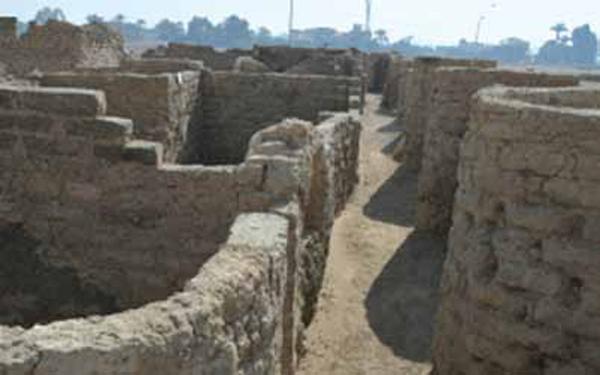
When famed archaeologist and former Minister of antiquities, Zahi Hawass, and his team set out to excavate an area near the Egyptian city of Luxor in September 2020, all they were hoping to find was King Tutankhamun’s mortuary temple.
Instead, the archaeologists stumbled upon the largest ancient city ever found in Egypt. Hawass who recently revealed the discovery, believes the enormous, well-preserved metropolis is the “So’oud Atun”, or the “Rise of Aten”, whose location has eluded scientists for decades.
 |
| This scarab beetle amulet was among the artifacts found |
The city dates back 3,400 years to the reign of Amenhotep III, one of Egypt’s most powerful pharaohs, who reigned from 1391 to 1353 BC. Often referred to as Amenhotep the Magnificent, the ninth pharaoh of the 18th Dynasty ruled during a time of unprecedented peace, allowing him to accumulate large amounts of wealth.
While archaeologists suspected the pharaoh had used some of his riches to build what Hawass refers to as “the golden city”, they had never been able to find it.
The researchers believe that his son, King Akhenaten, briefly lived in So’oud Atun before founding the city of Amarna about 250 miles away. Historians think the pharaoh and his followers left to escape the priests who were unhappy about his decision to forego all other deities in favor of the sun god Aten. Though it has been just about six months since the discovery, Hawass and his team have been able to unearth thousands of stunning artifacts.
Among them are rings, amulets, and pottery vessels. They also found a pristinely-preserved bakery, cooking, and food preparation area, complete with ovens and storage vessels.
A second, still partly-covered region comprising larger, well-planned structures appeared to be the city’s administrative and residential district, while a third area seemed to be reserved as an industrial zone. Here the archaeologists found mud bricks bearing Amenhotep’s seal, used to build temples, as well as casting moulds for amulets and other elements used to decorate temples and tombs. They also unearthed the remains of a cow or a bull, and a human skeleton with rope remnants around the knees.
Hawass, who says the team has only explored about a third of the lost city thus far, believes there are a lot more surprises to be found. The expert is particularly excited to uncover the tombs, which he speculates will be filled with treasures.
 |
| A human skeleton with the remains of a rope around the knees was found in one of the rooms |
 |
| The day-to-day objects found are giving researchers insights into the daily lives of the ancient Egyptians |
